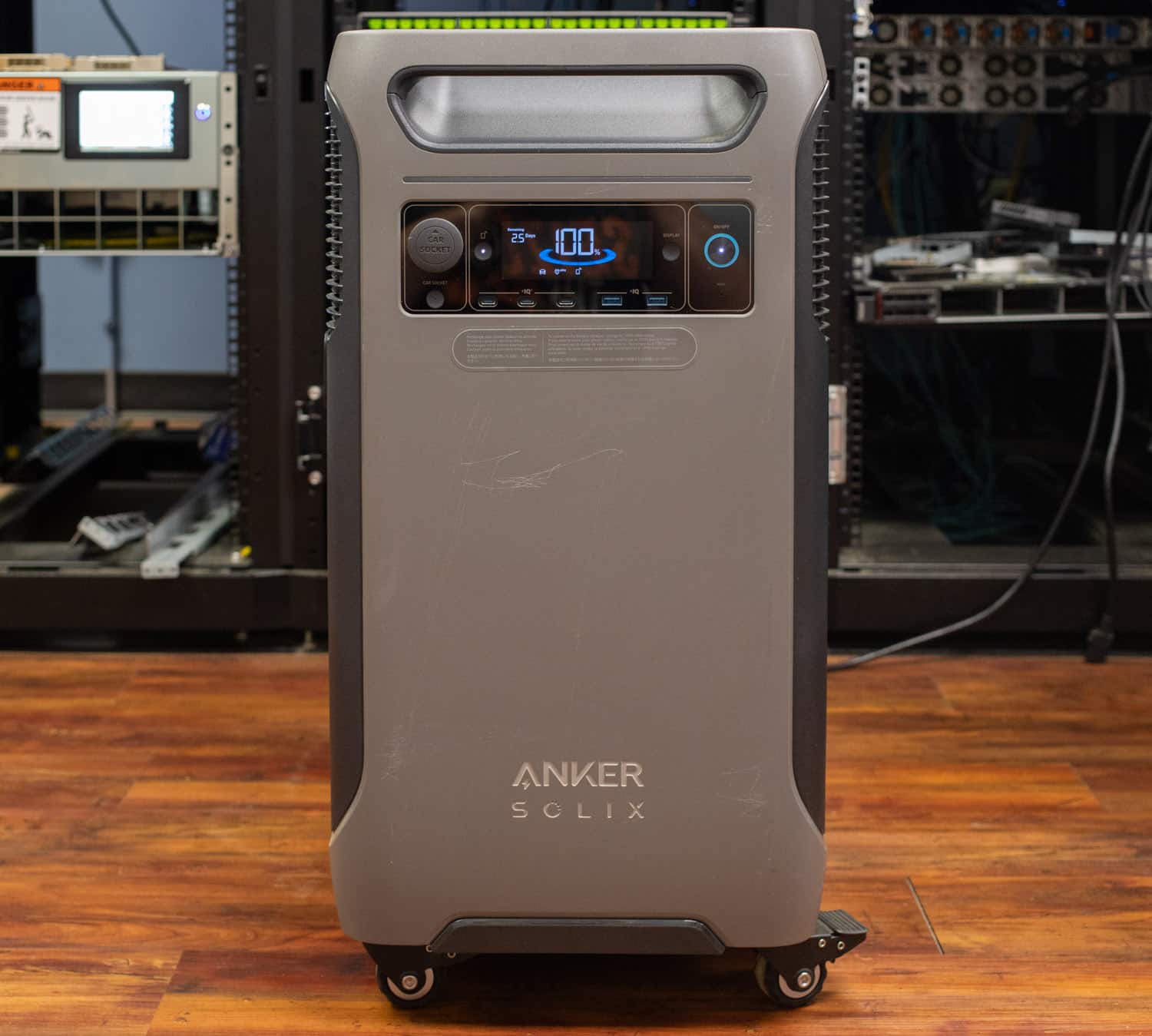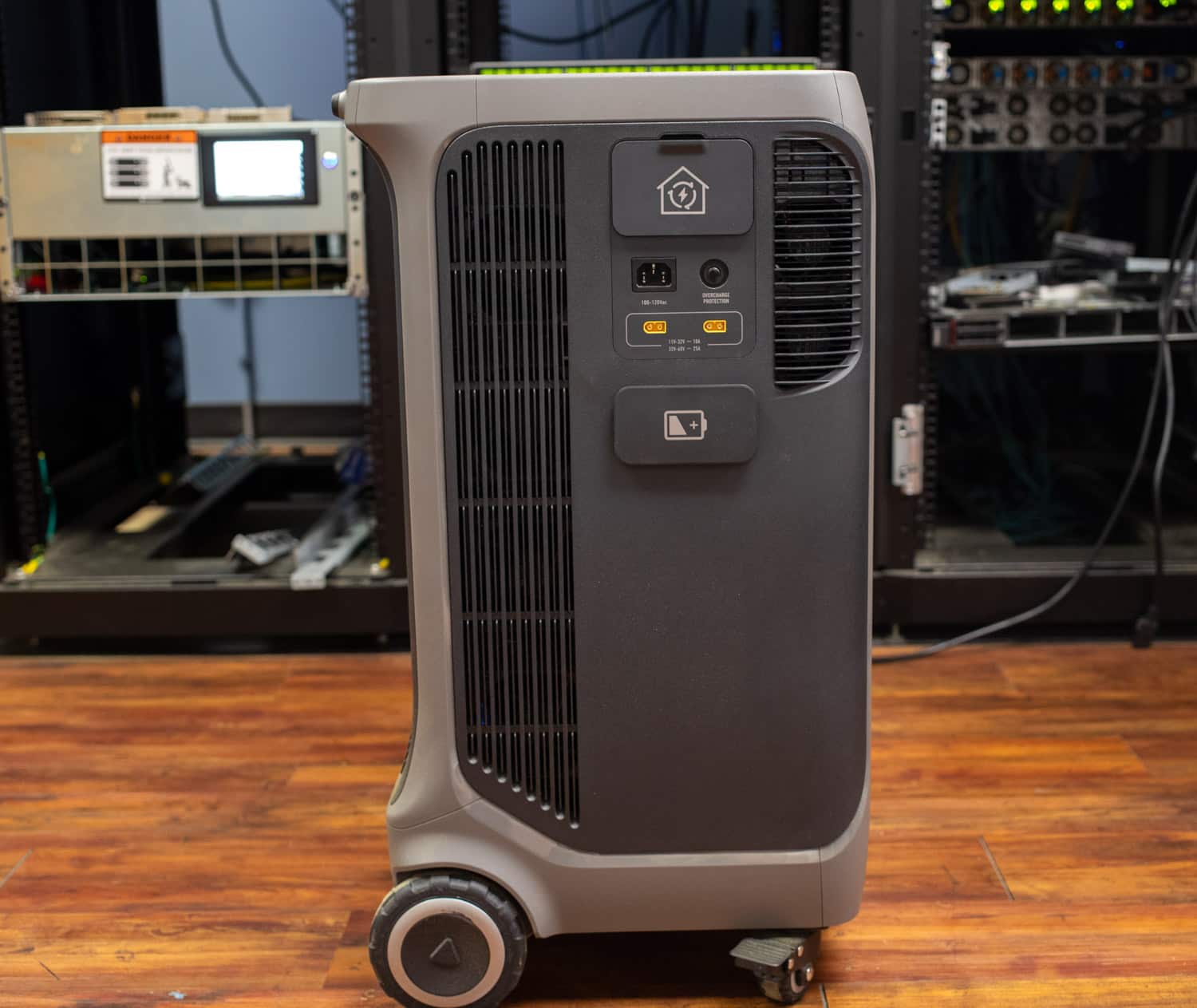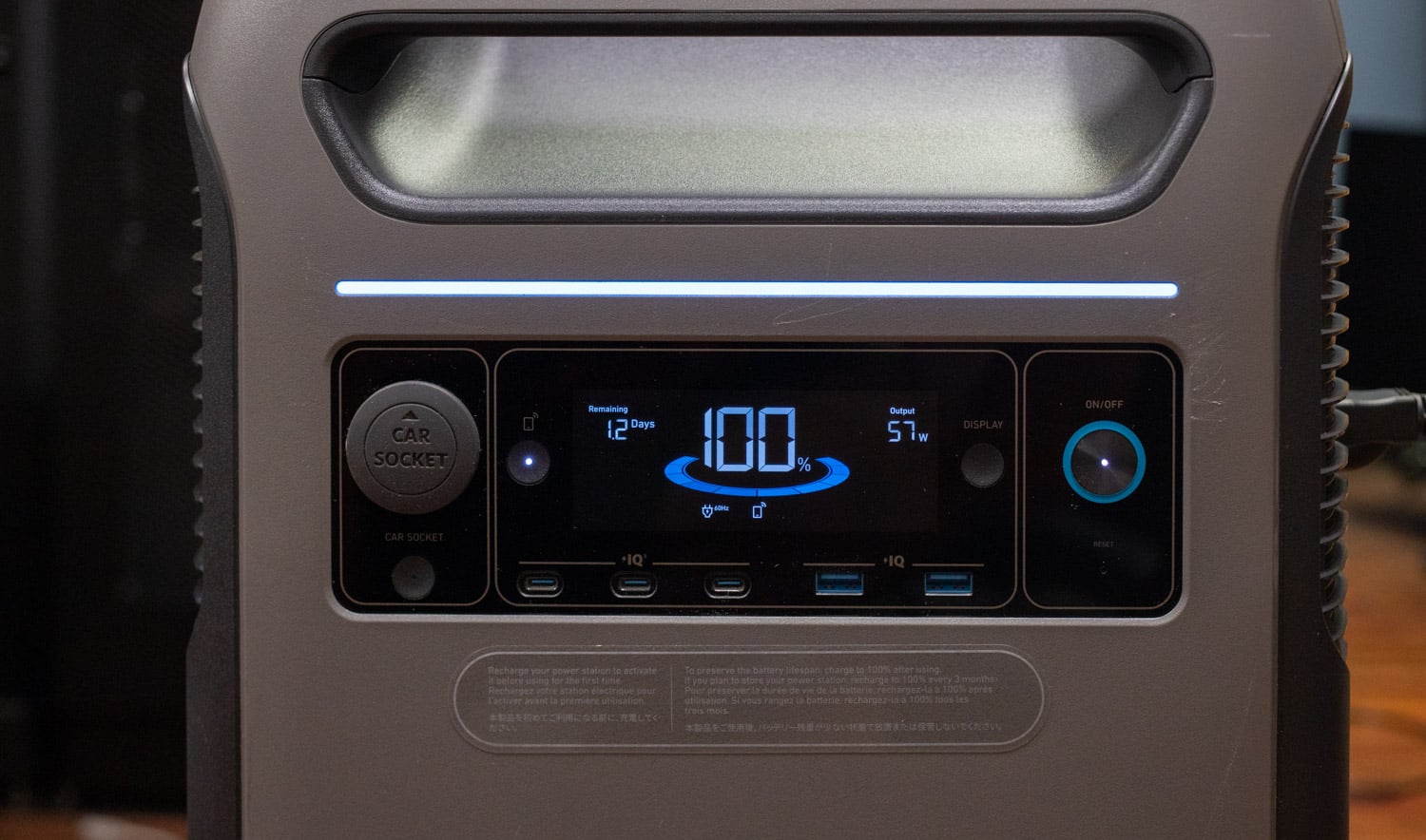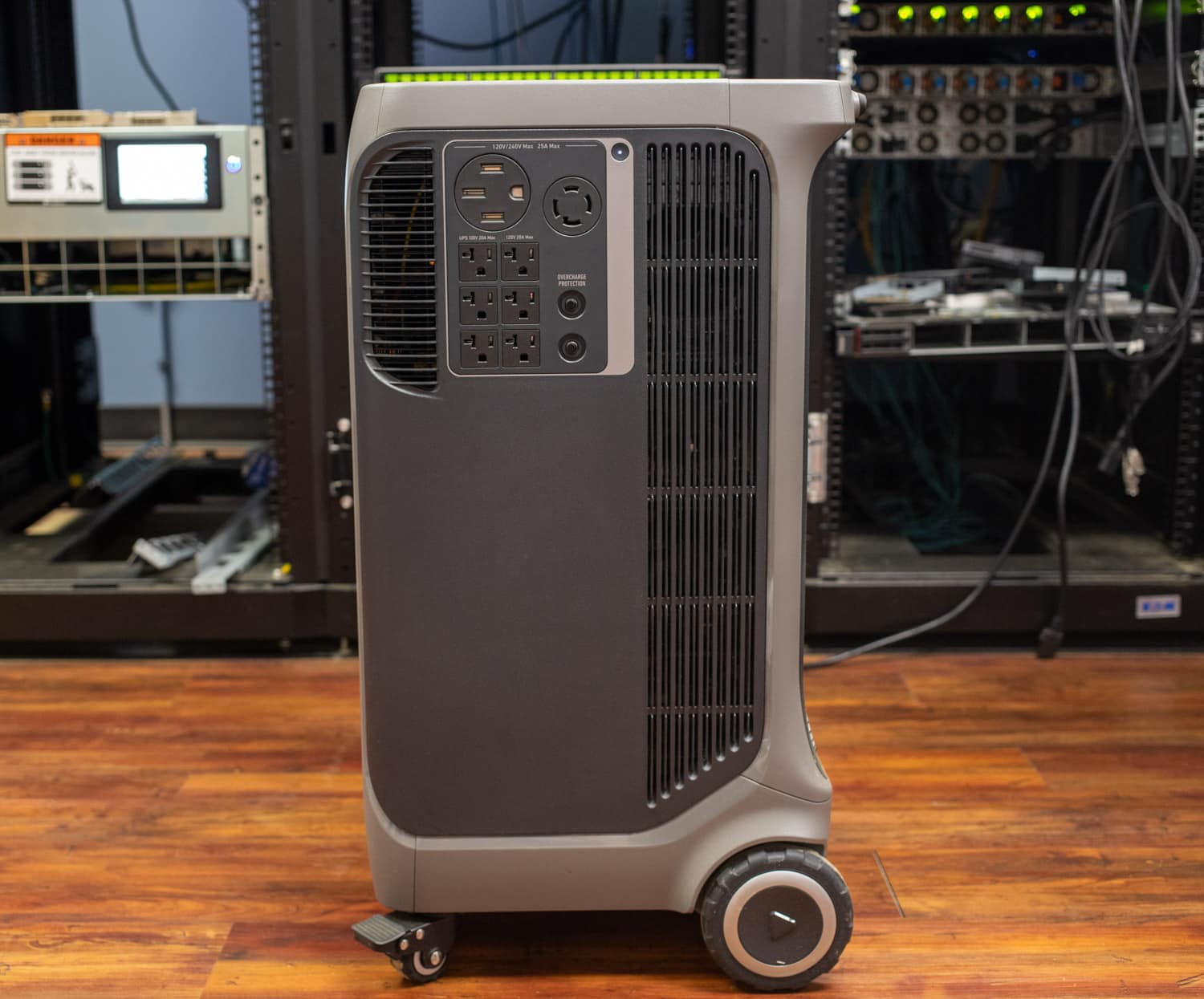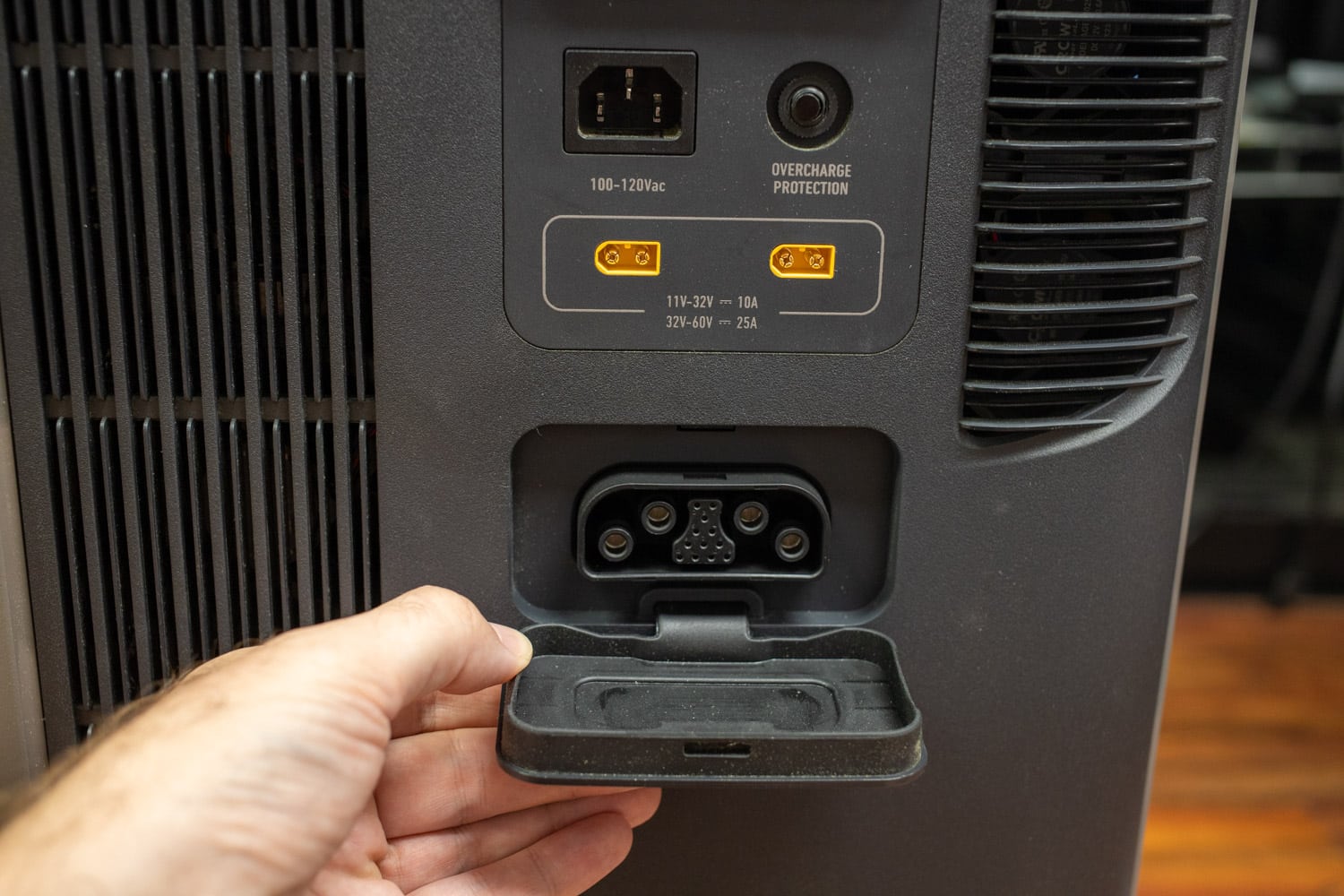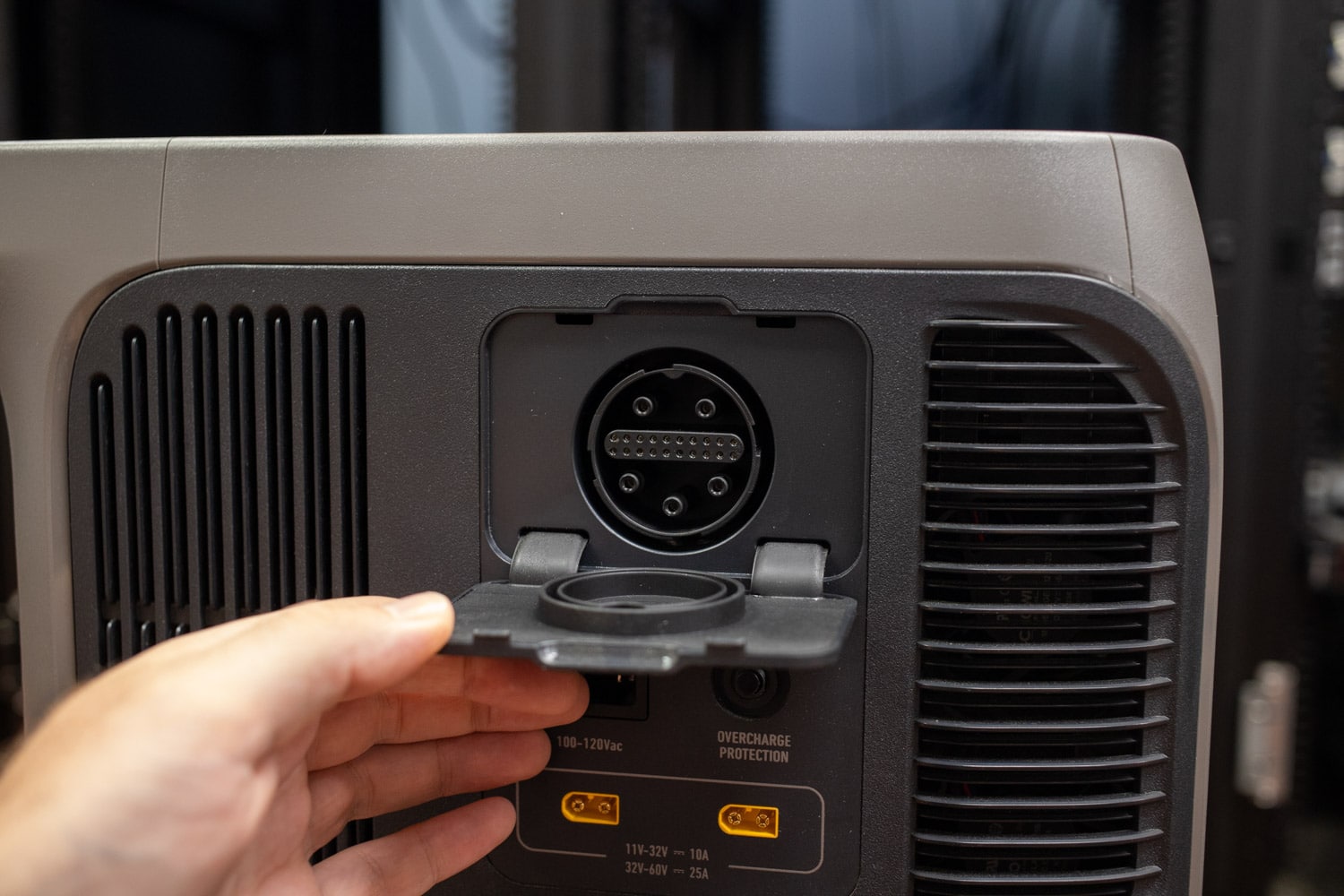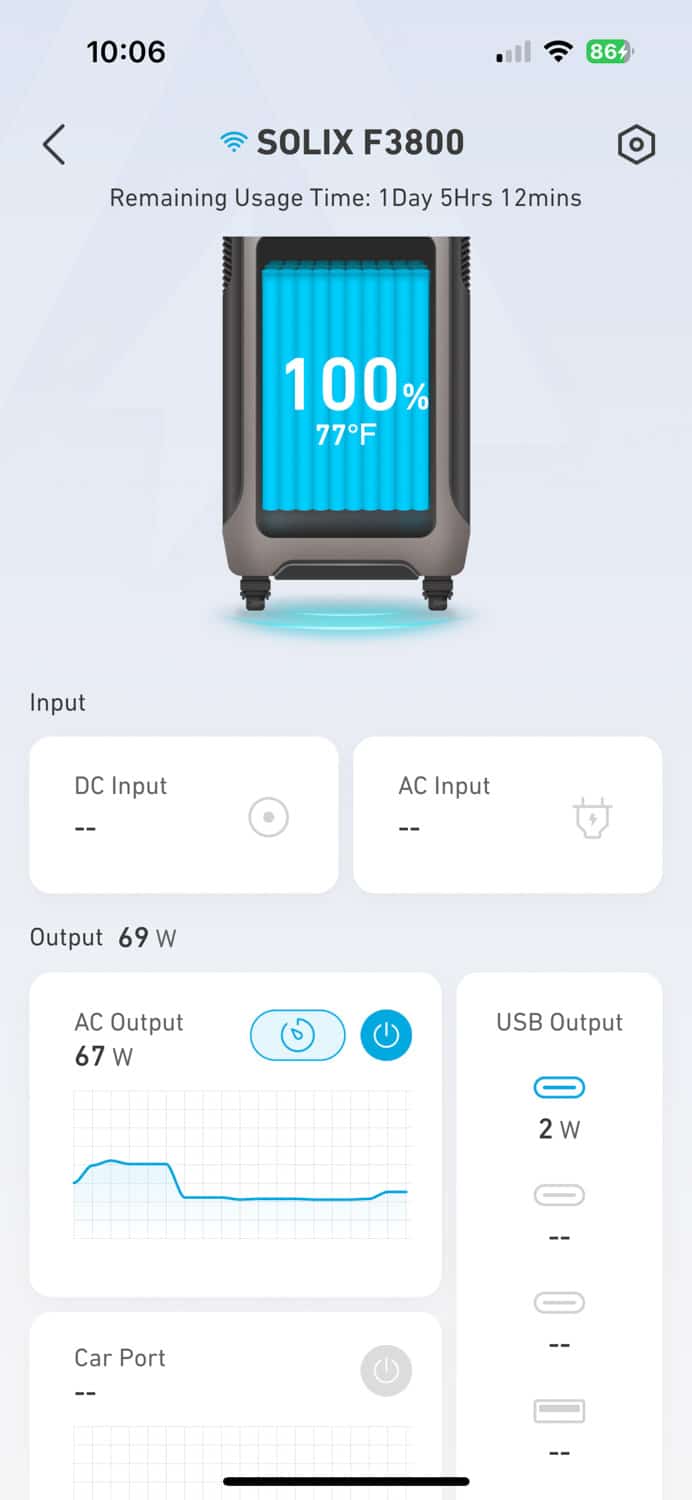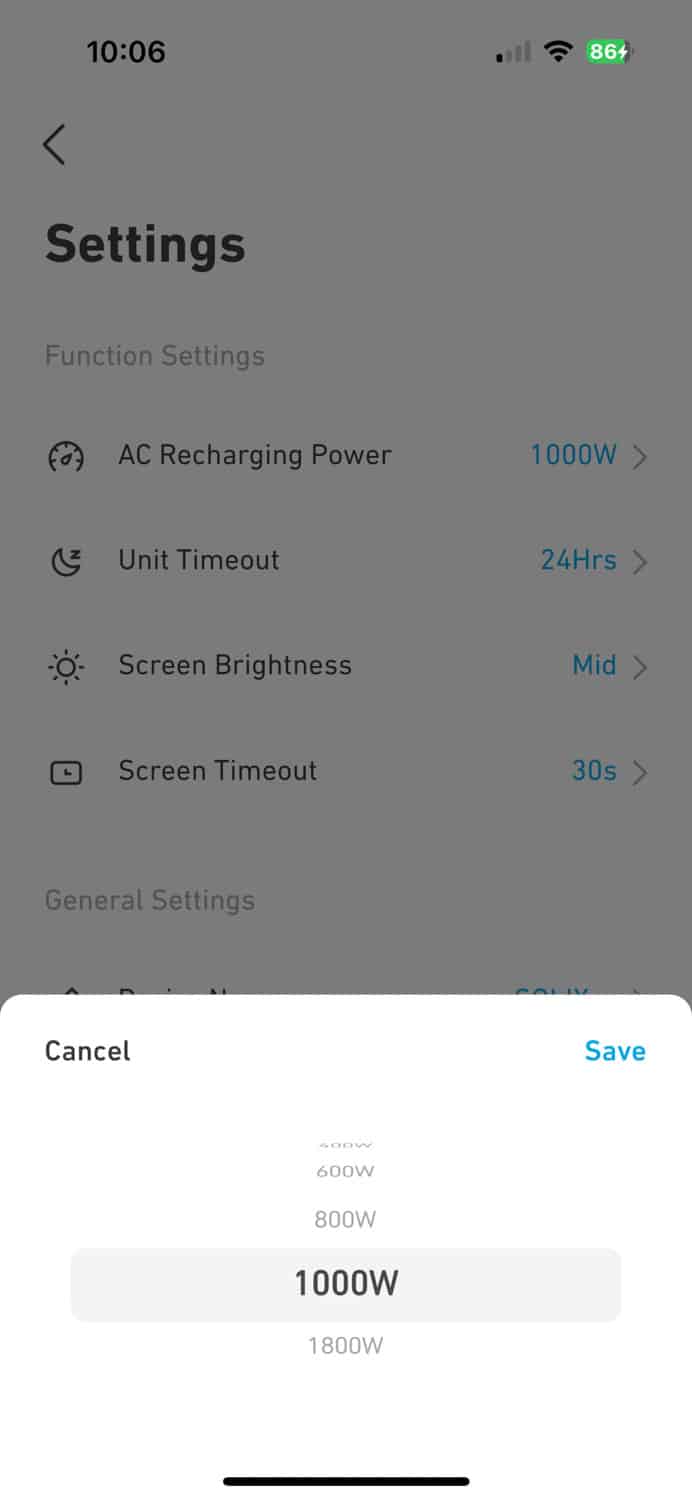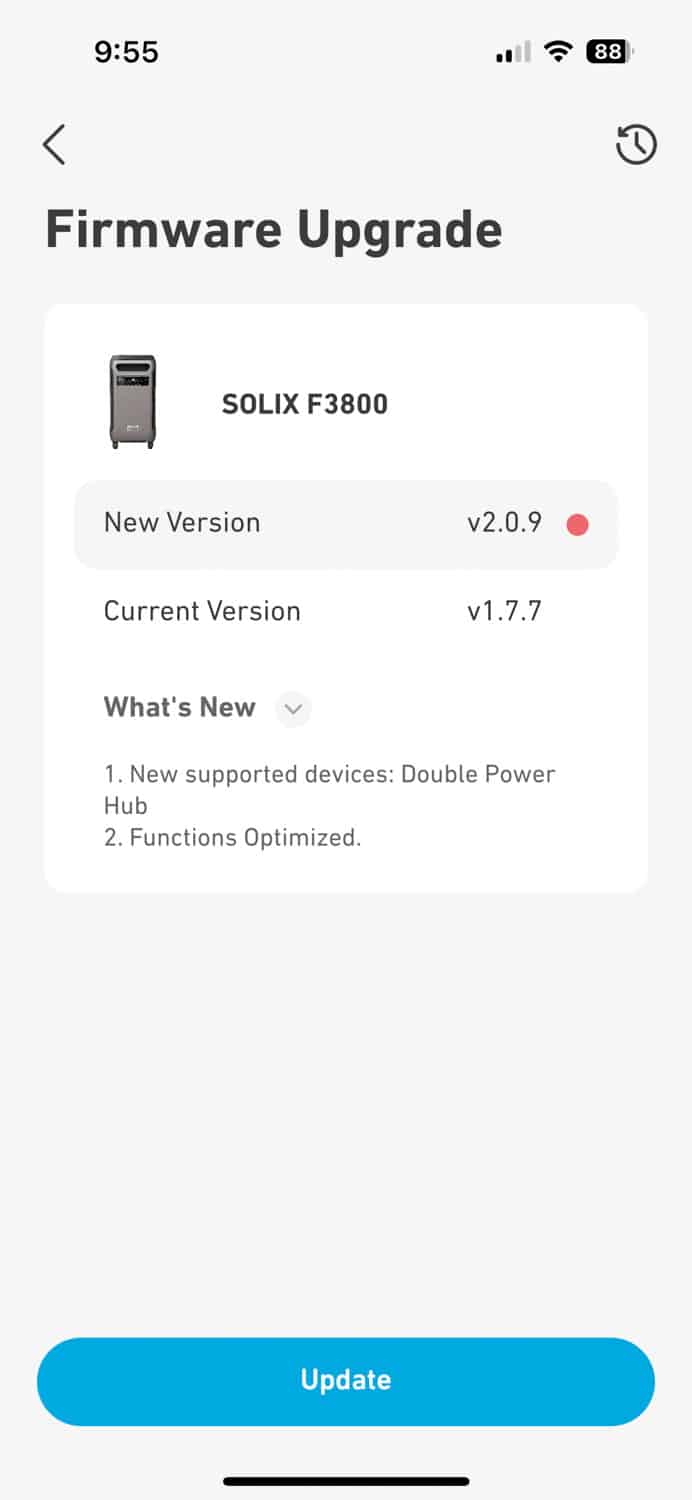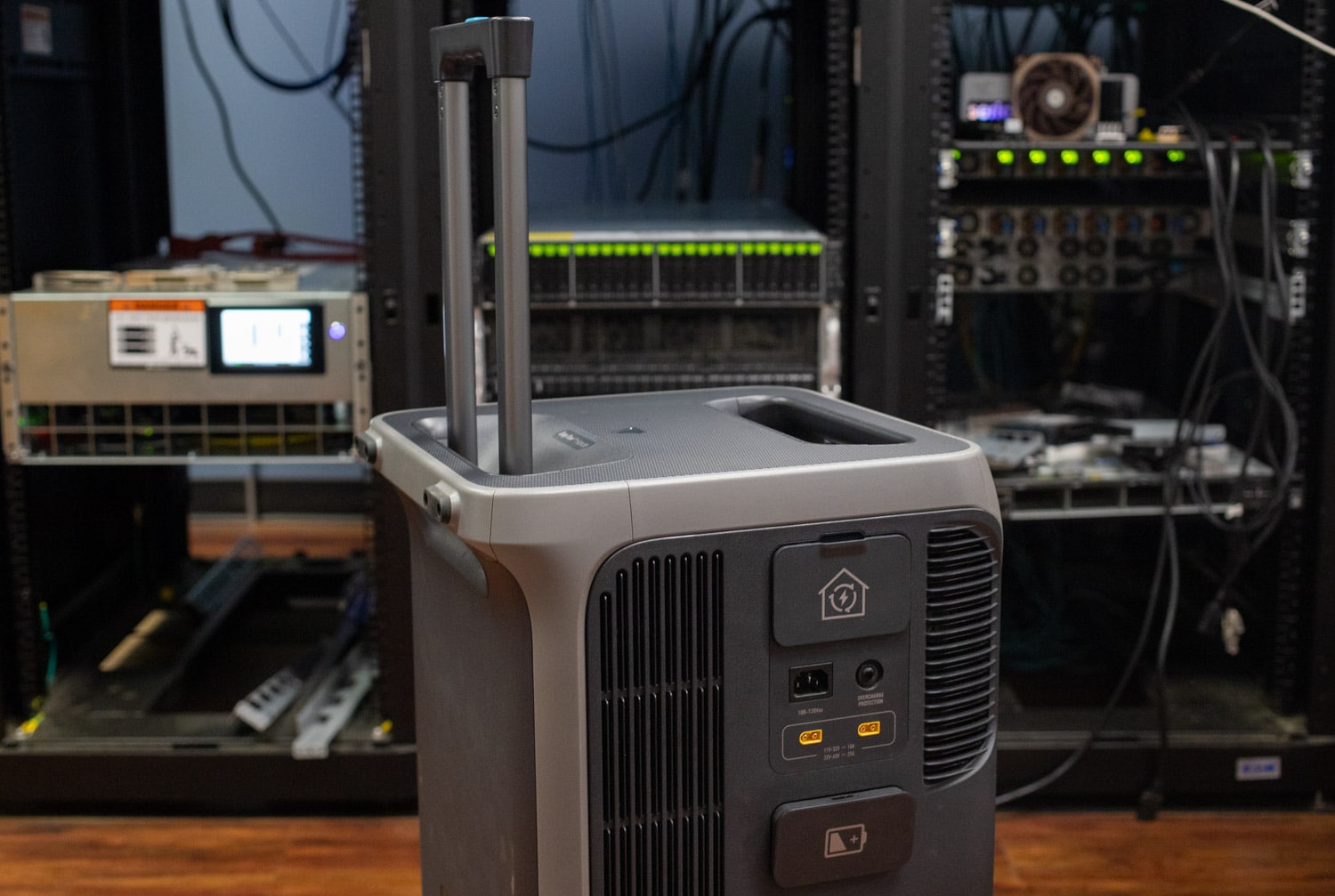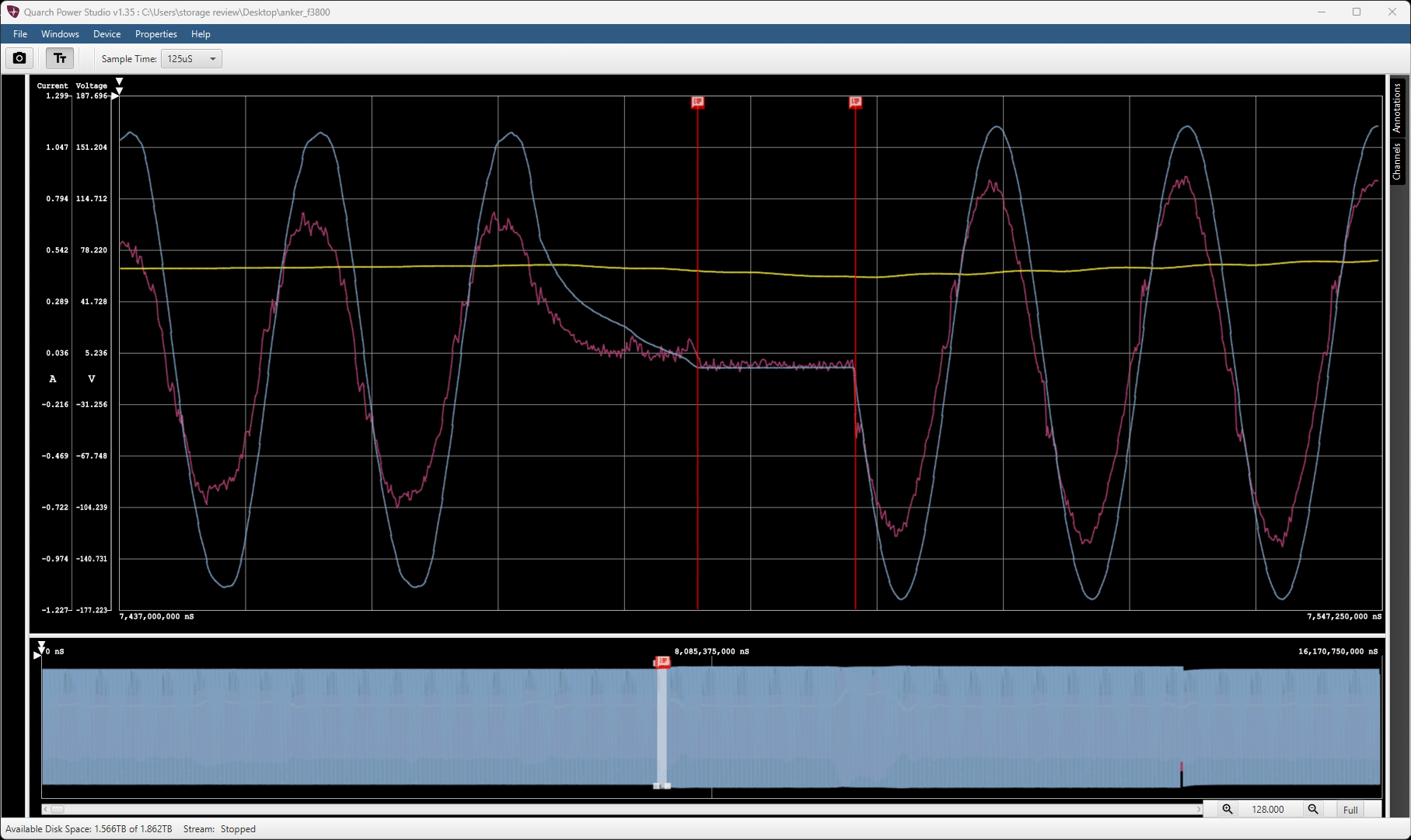The Anker SOLIX F3800 portable power station delivers rugged durability, a 3,840Wh battery and a 6,000W inverter. If you are in the market for portable power, the SOLIX F3800 should be at the top of your list.
The Anker SOLIX F3800 is a portable power station titan combining muscle with a refined finish. If you’re looking for a device that doesn’t just talk the talk but walks the walk, look no further. The SOLIX F3800 stands out as a power-packed contender, merging rugged durability with an impressive feature set.
The Anker SOLIX F3800 is built around a substantial 3,840Wh LiFePO4 battery pack, onboard inverter that supports up to 6,000W out, as well as capacity or inverter expansion support. A unique feature of the SOLIX F3800 is that it also supports outputting 240V directly out of the power station directly, without the need for additional add-on equipment. This gives the unit an interesting advantage in home, lab, or edge deployment situations.
As a larger model coming in north of 130lbs, this class of portable power station is one geared towards generator replacement or heavy-duty use cases. It has an onboard inverter to back that up, rated for 6,000W running and a whopping 9,000W surge.
Anker SOLIX F3800: Specs to Impress
| Feature | Anker SOLIX F3800 | Anker SOLIX F3800 Backup Solution |
|---|---|---|
| Capacity | 3,840Wh | 3,840Wh |
| Type | LFP | LFP |
| Cycles | 3,000 (At least 80% battery capacity) | 3,000 (At least 80% battery capacity) |
| Max Expansion Batteries | 6 | 6 or 12 |
| Max Capacity with Expansion Batteries | 26,880Wh | 26,880Wh 53,760Wh |
| AC Rated Power | 6,000W / 240V | Anker SOLIX F3800: 6,000W / 240V 2× Anker SOLIX F3800s: 12,000W / 240V |
| AC Surge Power | 9,000W | 9,000W |
| USB-A Output | 2× 12W | 2× 12W |
| USB-C Output | 3× 100W | 3× 100W |
| Car Socket Output | 1× 120W | 1× 120W |
| AC Input | 1,800W | 1,800W |
| XT-60 Input (Solar) | 2,400W | 2,400W |
| Car Input | 120W, 12V / 24V | 120W, 12V / 24V |
| 240V Split Phase | Y | Y |
| Charging EV | Y | Y |
| App Control | Y | Y |
| Discharging Temperature | -20°C – 40°C -4°F – 104°F |
-20°C – 40°C -4°F – 104°F |
| Recharging Temperature | 0°C – 40°C 32°F – 104°F |
0°C – 40°C 32°F – 104°F |
| Warranty | 5 Years | 5 Years |
| Dimensions | 702 × 388 × 395 mm (With 65 mm Wheels) 27.6 × 15.3 × 15.6″ (With 2.6″ Wheels) |
Anker SOLIX F3800: 702 × 388 × 395 mm (With 65 mm Wheels) 27.6 × 15.3 × 15.6″ (With 2.6″ Wheels) Transfer Switch: 117.5 × 112.5 × 47.5 mm 4.6 × 4.4 × 1.9″ |
| Weight | 60 kg / 132 lb | Anker SOLIX F3800: 60 kg / 132 lb |
Build and Layout: Designed for the Real World
The SOLIX F3800 doesn’t just throw its hefty weight around; it has the build to back it up. Encased in a robust shell with ergonomic handles and industrial-grade wheels, it’s clear that Anker has thought about real-world use. Whether you’re rolling it across rough terrains at the edge or just repositioning it in your garage, the SOLIX F3800 is designed to make life easier. The small wheels handled most of the situations we threw at them, although soft terrain such as field grass did get the unit sliding more than rolling.
The front panel is where all the action happens. It hosts a suite of output ports, all neatly arranged for easy access. The clear display is great, providing real-time data on input/output, battery level, and estimated runtime. The physical buttons and LED lights are accessible even in low-light conditions. And then there is the LED light bar—bright, soft on the eyes, and extremely useful, unlike some of the retina burners we have seen. It’s geared towards helping you locate the unit in a field, although it won’t be giving you much light for the surrounding area.
In terms of ports, the front has a 12V cigarette lighter jack, three USB-C ports, and two USB-A ports. The USB-C ports are all rated for 100W output, making them capable of charging devices such as notebooks, or smaller devices like tablets or phones.
For AC-rated hardware, you move to the side with the NEMA 14-50 and NEMA L14-30R connections for split-phase 120/240V out, as well as six other NEMA 5-20R 120V outlets. The six 120V outlets are split between half that offer UPS support and the other half that don’t.
The other side of the Anker SOLIX F3800 is where the inputs are handled. The unit sports an AC input jack, dual solar and car input jacks, and a battery expansion port.
There is also a unit expansion port for pulling additional models together or for connecting the system to a hardwired transfer switch.
App Integration: Control at Your Fingertips
What’s a modern power station without smart connectivity? The Anker SOLIX F3800 syncs with the Anker app via Bluetooth locally and Wi-Fi for remote management. The app provides a detailed overview of the power station’s status, including charge level, temperature, and input/output wattage.
It’s more than just monitoring; you can also manage the AC output, control the 12V output, and even adjust the built-in LED light.
Charging speed is also controlled through the app, so you can dial back the fast charging mode if you aren’t on a circuit that can support the higher power draw. The app has a clean interface, making it easy to navigate and use.
For long-term management, the app is also useful for how updates are handled. If new firmware is detected, you are given a notification to update if you want to. The process takes 5 minutes or so and you are back in action.
Real-World Performance: Because Specs Aren’t Everything
Before we deployed the Anker SOLIX F3800 in the field, we put it through a number of charge and discharge cycles to measure the usable battery capacity. In our tests, it took 4,930Wh to charge from 0 to 100 percent and delivered 2,980Wh before cutting off the inverter. Charge time will vary depending on how you set the charge limit in your environment. At its peak, you can set it to draw 1800W from utility power, although for more delicate circuits you can taper this down to just 200W.
The SOLIX F3800 is also well-situated for power backup. You can pair it up with a hardwired transfer switch for more permanent home or edge deployments. Pair it with solar panels, and you have a sustainable power solution that lasts for extended periods. The 2,400W solar input capacity means you can charge it quickly and sustainably.
On our recent remote project, where we captured the 2024 solar eclipse, the SOLIX F3800 was in the background, powering our RV-based accommodations. It could be plugged right into our rental RV and had enough capacity to power the air conditioner on the roof. With a family of four, plus several laptops and the other Anker power station, we found the SOLIX F3800 easily lasted a full day of cooking in the microwave, keeping the fridge cold, and charging all the devices.
Thanks to the onboard generator from the RV, and the quick charge capabilities of the SOLIX F3800, we could run the generator for a couple of hours to top up the battery in the late afternoon and then shut it down to enjoy the quiet for an uninterrupted flow of power for the campsite. This means the SOLIX F3800, on a longer-term camping trip, helps reduce costs, saves fuel, and extends the life of generators. We only had to run the generator for 3 hours a day to have power available round the clock. For instance, per-hour generator use can reach as much as $5 for a rental, depending on who and where you rent from.
UPS Testing
In the StorageReview Lab, we put the onboard UPS capabilities through our testing process with the Anker SOLIX F3800 powering a workstation, measuring the cutover time in the event of a power failure. On the Anker spec sheet, the SOLIX F3800 offers a 20ms switchover time, which is well within the range of what most electronics can work around for holdup power. Many power supplies have capacitors that can keep running, even through momentary power outages. Too excessive though and the system will shut off.
Using our Quarch Mains Power Analysis module in between the SOLIX F3800 and a Lenovo ThinkStation P520, we cut power and reconnected the unit to see how the UPS feature performed. On the initial transfer to the battery, we measured a delay of 13ms. When power returned and the unit switched back from battery to utility power, the delay was 14ms. Overall we were satisfied with the exceptionally short switchover time and the nice clean AC waveform running off the inverter.
In terms of the UPS mode output, only the 120V ports support UPS mode. The SOLIX F3800 doesn’t support operating with 120V in and 120/240V split-phase out at the same time.
EV Charging and Expandability: Beyond the Basics
One of the features of the SOLIX F3800 is its versatility. Need to charge an electric vehicle? The NEMA 14-50 port has you covered. Just double-press the 240V switch to activate EV charging mode, and you’re good to go. Whether it’s your Tesla or your RV, this power station is ready for the challenge.
In terms of expansion, the SOLIX F3800 isn’t just a standalone unit; it’s a building block. By adding more batteries and units, you can expand its capacity up to a whopping 53.8kWh. That’s enough to keep your home powered for days during an outage. Anker’s modular approach means you can scale your power solution as needed.
Final Thoughts: A Powerhouse with a Touch of Class
The Anker SOLIX F3800 is a building block for a comprehensive power system; it’s a solution for all your off-grid power needs. Whether you’re a digital nomad, an outdoor enthusiast, or someone who wants a reliable backup for those inevitable power outages, the SOLIX F3800 delivers. With a 3,840Wh battery pack, 6,000W onboard inverter, and support for 2,400W of solar charging capacity this can power nearly anything you can throw at it.
In our testing, we found the unit was more than capable of keeping our workloads running for extended periods. We measured a usable battery capacity of 2.98kWh after a 100% charge and liked its versatile voltage ranges that even supported running a 240V datacenter PDU on battery. When it came time to handle power interruptions, the F3800 took them in stride. With a 20ms rating, we measured UPS cutover times of 13ms utility to battery and 14ms battery returning to utility.
With its impressive build quality, remote control capabilities, and real-world performance, the SOLIX F3800 is an investment that’s hard to beat. So, if you’re in the market for a power station that’s as tough as it is smart, the Anker SOLIX F3800 deserves a spot at the top of your list.
Anker SOLIX F3800 at Amazon (affiliate)
Engage with StorageReview
Newsletter | YouTube | Podcast iTunes/Spotify | Instagram | Twitter | TikTok | RSS Feed

